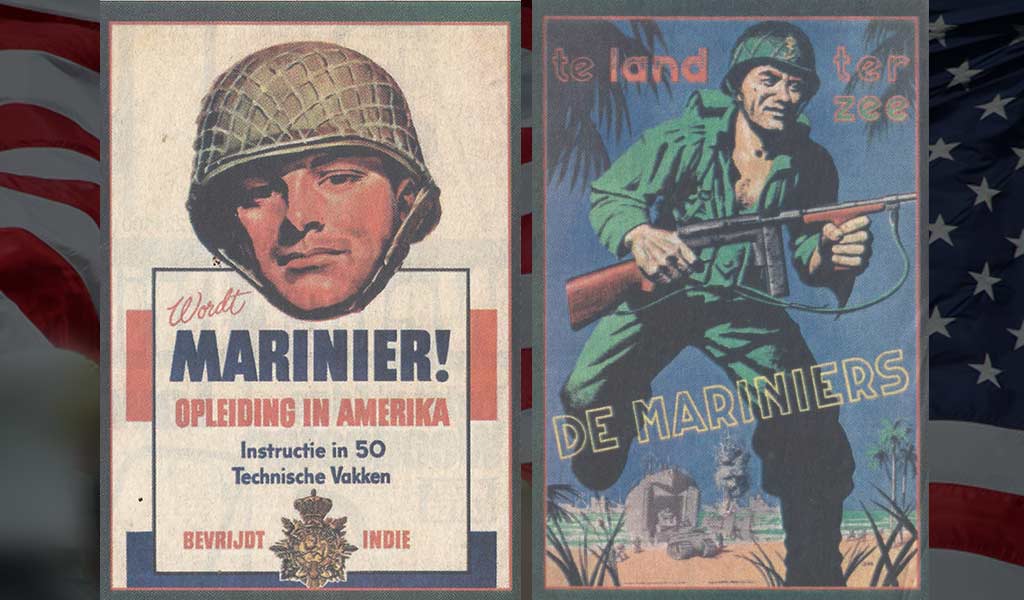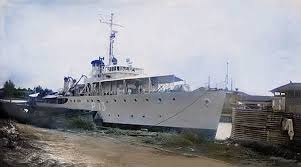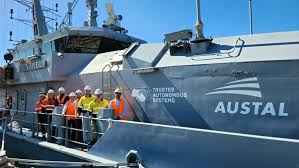When the Netherlands East Indies (NEI) fell to Japan in early 1942, the Dutch government-in-exile undertook to restore its military capability. Among the most significant efforts was the formation of the Mariniersbrigade, an amphibious infantry brigade trained in the United States under joint Dutch–American oversight. Though far from the Pacific front, the unit’s roots and key personnel had direct links to the NEI and to Australia, where many had regrouped in the aftermath of the Japanese advance.
Establishing the Mariniersbrigade
By 1943, the Dutch government had authorised the creation of a brigade-sized force, and under the leadership of Colonel M. R. de Bruyne, began assembling approximately 5,000 men. These forces, drawn from navy and army survivors, Dutch refugees, and volunteers from the Americas, were trained and equipped in the American style. The brigade was structured to include infantry battalions, tank companies, amphibious vehicles, engineers, artillery, and supporting logistical and medical units.
The foundation of the unit drew in part on Dutch navy and marine personnel who had escaped the Japanese advance through Australia. After regrouping in Fremantle, Sydney, and Melbourne, some of these men were transferred to the United States for retraining. Their journey reflects the wider Allied logistical cooperation that made Dutch rearmament in exile possible, with Australia serving as an early staging ground.
Training in North Carolina

Most of the brigade trained at Camp Lejeune, a major US Marine Corps base located in North Carolina on the United States’ east coast. Specialist components—including armoured, transport, and engineer units—received instruction at Camp Davis, another facility in North Carolina near the town of Holly Ridge. Originally an Army anti-aircraft training site, Camp Davis had been adapted to serve Marine Corps and Allied needs by 1943. There, Dutch marines received intensive training in amphibious landings, jungle warfare, and tank operations using American equipment and tactics.
The formation of the Marinersbrigade marked one of the earliest instances of integrated Allied training for a European colonial military force in the Pacific war theatre.
Deployment to the NEI and postwar operations
In late 1945, the Mariniersbrigade departed the United States for the NEI via Norfolk, Virginia, one of the major naval ports on the US Atlantic coast. Although the brigade was originally intended to assist in retaking NEI territory from Japan, the war ended before it could be deployed in combat. Instead, the unit was sent to Java and Sumatra during the volatile early stages of the Indonesian National Revolution, where it participated in military operations to support Dutch efforts to restore colonial control.
The brigade became entangled in a complex and rapidly changing political situation, facing growing international criticism of Dutch efforts to suppress Indonesian independence. It was ultimately disbanded in 1949 following the Dutch recognition of Indonesia’s sovereignty.
Dutch–Australian connections
While the brigade’s training occurred in the United States, Australia played a key enabling role in its formation. Dutch naval and marine personnel had first regrouped in Australia following the fall of the NEI in March 1942. Australian authorities facilitated their transit, provided access to ports and communications infrastructure, and supported the onward movement of personnel and logistics to the United States. Without Australia’s early cooperation, the Dutch may not have been able to field such a cohesive reformed amphibious force at all.
Although the Mariniersbrigade’s combat role was ultimately directed at the postwar Indonesian conflict rather than the Pacific War, it represents an important legacy of Dutch–Allied wartime collaboration and strategic ambition in the region. Its story highlights how wartime exile, international training partnerships, and political shifts converged in the formation of a unique Dutch military unit.
Related articles
- A Dutch military and civil inventory in Australia – March 1942 snapshot
- From indifference to diplomacy: how the war transformed Dutch–Australian foreign relations
Sources
Jack Ford, Allies in a Bind: Australia and the Netherlands East Indies in the Second World War, CQU Press, 2001
Wikipedia: “Mariniersbrigade in Nederlands-Indië”


